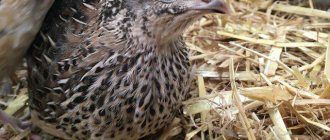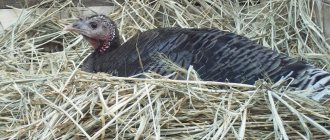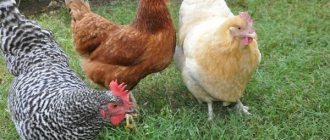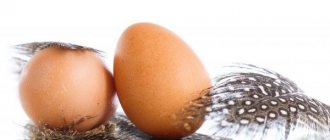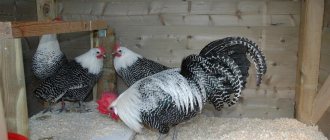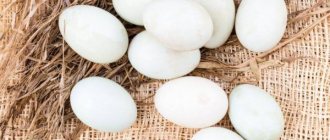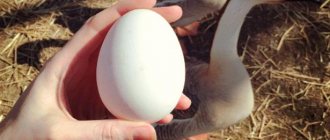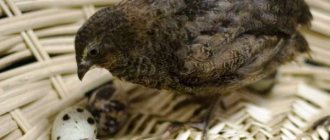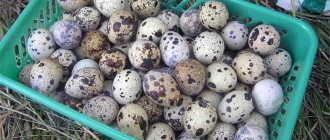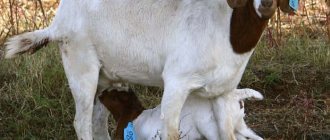Quails are kept on a home farm to produce healthy meat and eggs. There are egg breeds of this bird, characterized by high egg production, and meat breeds, which lay only a few dozen eggs per season, but are large in size. Depending on the purpose of the quail establishment, breeds with different egg production are selected. Whatever direction of the farm the poultry farmer chooses, he needs to know how his charges will fly.
How many eggs does a quail lay when bred at home?
A young healthy quail can lay from 250 to 300 eggs per year. This is the average egg production range. The number of eggs laid is affected by:
- season;
- quail breed;
- age of the bird.
The secret to the high profitability of quails is their early ability to reproduce. When females are 35-40 days old, they begin to lay eggs.
When choosing a quail breed for breeding, you need to compare its capabilities with your goals. The number of eggs laid over a certain period of time depends mainly on the breed, then on the conditions of detention and the season. The average for quails is 25 eggs per month.
Number of eggs laid by a quail over a certain period of time:
- In a day. There are breeds of quail, the females of which can lay eggs several times during the day. For example, Japanese quails can lay 2 eggs per day, while other, less productive breeds lay eggs every few days. The average for quail is an egg per day.
- Per month. The number of eggs laid per month depends not only on breeds and seasonality, but also on the age of the female. Productivity changes something like this:
- beginning of laying – 8-10 eggs per month;
- In some breeds, by the tenth month the number of eggs laid increases to 13 eggs per month, in others it decreases to 7-8 eggs.
- In year. Highly productive egg breeds - Japanese, Estonian and others - lay 280-320 eggs per year. Meat and egg breeds - 260-280, meat breeds produce 200-220 pieces per year.
When to expect eggs
Quails are tied to annual seasons, and have their own biological life cycle. These two indicators determine the quantity of production and its frequency. Age characteristics also play an equally important role.
There are practically no losses from the last factor; the first eggs are received 40 days after the quail is born. While puberty is going on, the female brings up to 10 eggs, later this figure gradually increases to three dozen in 30 days from one bird. The average egg production per year is 300 eggs.
Japanese quail
The quail prefers to lay eggs after lunch and in the late afternoon; representatives of some breeds go to the nest immediately after feeding.
Worth knowing. There is no need to consider quails as egg-producing machines; they have breaks between layings. This is quite normal. Most often, the hen lays one egg for 5-6 days, then takes a break for several days. If the duration of the break exceeds more than 3 days, then this is already a cause for concern, it is recommended to seek help from a specialist.
Quails lay eggs throughout the whole year, during which time there are breaks and recessions (for example, in winter, if the farmer does not create optimal conditions and the necessary lighting).
When do quails start and stop laying eggs?
Wild quails live up to five years, the life of domesticated species is even shorter - only 2-3 years. With such a short life, birds have to mature early. A quail is capable of producing eggs when:
- she will be 35-40 days old;
- she will gain 100 g of weight.
Wild quails lay eggs much later. Breeders who bred domestic breeds tried to speed up the maturation of birds as much as possible, and they succeeded. If the required conditions are provided, birds will begin to produce eggs consistently from the second month of life.
The greatest productivity is observed a week after the start of egg laying. After 3 months, egg production decreases, then the bird stops laying eggs - this happens after another 5-7 months. This dynamics is explained by the short life span of quails. Recommended:
- change the livestock upon reaching 8 months of age;
- Take eggs for incubation from 2-month-old females - then the chicks will be stronger and healthier.
It is believed that quail eggs laid by females after a year of life are inferior in taste to eggs from younger quails.
Laying hens after a year of life are considered unpromising. Maximum productivity ends after 10-12 months. In the second year of life, egg production drops by 50% - this is unprofitable. After two years, the number of eggs drops significantly.
How long do they live?
Under natural conditions, the life expectancy of quails is 3-5 years, but at home this period is noticeably reduced. This is due to egg production in female quails. Starting from 40-50 days, the birds begin their productive period. Approximately before the tenth month, females begin to actively lay eggs, bringing a large number of tasty and healthy eggs. Further, the activity decreases, and at the same time the taste and beneficial qualities of this product deteriorate.
Mature quail eggs are also not suitable for raising offspring, since practice shows that such eggs produce weak and sickly offspring.
Experienced sparrowhawks leave no more than 10-15% of the birds of the entire population for wintering. Young birds tolerate cold well due to their dense and dense down, and do not require special care, while older quails require artificial means of heating.
How does breed affect egg production?
Quail breeds are divided into meat, egg and meat-egg. Representatives of egg breeds have the highest egg production.
Japanese quail
This breed is a kind of standard for egg production, meat productivity, and other characteristics. “Egg” indicators of the Japanese breed:
- number of eggs per year – 250-300 pieces;
- weight of one egg – 9-12 g;
- the beginning of oviposition is 35-40 days.
Japanese quails have a high fertility rate - it reaches 90%. Under favorable conditions, females are capable of laying 320 eggs.
High fertility in this breed lasts for about a year, then egg production drops by 50% or more.
Advantages of the Japanese breed:
- undemanding to living conditions;
- resist diseases;
- rapid weight gain - the weight of an adult bird is reached on the 40th day of life;
- Sexual characteristics appear on the 20th day - the birds can be placed in different cages at an early stage.
Pharaoh
This is a meat breed, but their egg production is not much behind that of the “Japanese”. They lay an average of 220 eggs per year. Egg weight is 12-16 g. The fertility rate of the Pharaoh is as high as that of the Japanese breed - 80-90%. Pharaoh successfully combines high egg production with weighty carcasses - the bird is twice as heavy as egg quails. Female pharaohs weigh 300 g, while the weight of egg-bearing quails averages 140-180 g.
Quail eggs are significantly superior in nutritional value to chicken eggs. They contain more vitamins, amino acids and microelements.
English
The breed was developed by the British; they have been bred in Russia since the 80s of the last century. There are two subspecies of English quail - white and black. These quails do not differ in anything except their feather color. Their egg production rates are the same - they lay 270-280 eggs per year. The weight of one egg is 10-11 g.
But the fertility rate of “English” breeds is lower than that of previous breeds – at 75%. The white breed is especially promising for industrial breeding - they not only lay a lot of eggs, but are also distinguished by their attractive pale pink carcasses.
Estonian
Record holder for egg production. Female Estonian quail lay up to 320 eggs per year. Egg weight – 12 g. Fertility – 95%. The best choice for cost-effective breeding of egg-laying quails.
“Estonians” are valued for their versatility; they are cost-effective for any direction - egg or meat. The bird quickly gains weight and lays a lot of eggs. The breed was developed by Estonian breeders in 1989 by crossing the Japanese breed with Pharaohs and English white quails. The resulting breed was different from all previous ones:
- a combination of high egg production with good weight gain;
- high life expectancy;
- duration of oviposition;
- good survival rate.
Tuxedo
This is an egg-meat breed, bred by crossing white and black “English” breeds. The breed received its name for its original color - the back, wings and tail of tuxedo quails are dark, and the neck and belly are white.
Tuxedo quails are often kept for their beauty, but they are also excellent laying hens - only slightly inferior to the Japanese and Estonian breeds. Females lay their first eggs at 6-7 weeks of age.
It is impossible to distinguish females and males by color. It is possible to understand who is who only after reaching sexual maturity - by the cloacal gland under the tail of males.
Manchurian
These beauties are excellent layers of eggs. It is difficult to even determine which direction they belong more to - meat or egg. Golden birds are very beautiful - they are often kept for decorative purposes. The birthplace of the breed is China. A characteristic external feature of the Manchurian breed is the pattern on the head.
The body weight of golden quails is less than that of broiler breeds, but greater than that of egg-laying breeds. But in terms of the number of eggs laid, they are inferior to the leaders - Japanese and Estonian quails.
Marble
A hybrid of the Japanese breed, characterized by a smoky color. The streaks on the plumage resemble the structure of marble. Color varies - quails can have light gray, gold, white and other plumage. In terms of egg production and other indicators, they do not differ from the Japanese breed. Very high egg production and relatively large eggs - up to 10 g. An ideal breed for decorative keeping.
For comparative egg characteristics of these and other popular breeds, see Table 1:
Table 1
| Breed name | Direction | Egg production, pcs./year | Egg weight, g | Female/male weight, g | Fertility, % |
| Japanese | Egg | 250-300 | 9-11 | 140/120 | 80-90 |
| Pharaoh | Meat | 220 | 12-16 | 300/200 | 80-90 |
| White English | Egg | 280 | 10-11 | 190/160 | 75 |
| Black English | Egg | 280 | 10-11 | 200/170 | 75 |
| Tuxedo | Egg and meat | 280 | 10-11 | 170/150 | 80-90 |
| Marble | Egg | 260-280 | 9-10 | 140/110 | 70 |
| Manchurian | Egg and meat | 220 | 16 | 300/175 | 80 |
| Estonian | Egg | 300-320 | 12 | 200/170 | 95 |
Productivity
Due to their small size, the productivity of quails is noticeably lower than that of other birds used in home breeding. However, breeding these birds is considered very profitable due to the following factors:
- simple care and maintenance;
- low financial costs;
- quick results.
Weights
Even with proper feeding and careful care, the maximum weight of an adult will not exceed 350 grams. But due to the fact that quail meat is a dietary and very high-quality product, many poultry farmers choose meat when breeding quails. The characteristics of birds are such that it is not possible to simultaneously receive a large number of eggs and achieve good weight gain, so sparrowhawks have to choose one direction.
Egg production
This indicator for quails is exceptionally high. They can produce up to 300 eggs per year. Quail eggs are a very valuable product due to their high content of vitamins, microelements and non-fatty acids. Therefore, breeding quails for eggs is the highest priority among domestic poultry farmers. Females begin to lay eggs very early. The periods of quail egg production are described here. So, with good care, laying hens begin to lay eggs within a month. The period of activity lasts 8-9 months, but, in general, can last up to three years.
Since quails have a very active metabolism and develop quickly, a complete replacement of the stock can be done annually.
Egg weight and composition
The average weight of quail eggs is 10 g. The weight range is 7-12 g. Some breeds are larger. The shell is spotted. The main disadvantage is the high cholesterol content.
It is believed that domestic eggs cannot be a source of salmonella, so they can be eaten without heat treatment. This is not true. Most bacteria are killed by the bird's high body temperature, but not all. Raw eggs can, in particular, cause pullorosis infection.
Quail eggs are considered a dietary product. Their calorie content is only 168 calories per 100 g. Table 2 shows the chemical composition and nutritional value of quail eggs.
table 2
| Name | Quantity per 100 g |
| squirrels | 11.9 g |
| fats | 13.1 g |
| carbohydrates | 0.6 g |
| water | 73.2 g |
| cholesterol | 600 mg |
| calcium | 54 mg |
| iron | 3.2 mg |
| copper | 112 mcg |
| phosphorus | 218 mg |
| cobalt | 62 mg |
| potassium | 144 mg |
| sodium | 115 mg |
| manganese | 0.03 mg |
| sulfur | 124 mg |
| magnesium | 32 mg |
| vitamins of groups A and B1 | 13.7 mcg |
| carotenoids | 67 mg |
| vitamin PP | 11 mcg |
| vitamin B2 | 110 mcg |
Thanks to regular consumption of quail eggs:
- the body recovers after heavy mental or physical stress;
- immunity increases;
- hemoglobin increases;
- the functioning of the nervous system is normalized.
Quail eggs are useful for atherosclerosis, bronchial asthma, diabetes, hypertension, obesity, migraines, and chronic cholecystitis. For a therapeutic effect, it is enough to eat 2-3 eggs daily.
How are quail eggs different from chicken eggs?
Everyone has heard about the benefits of quail eggs. A comparative analysis is given in Table 3. The indicator values are given for one egg.
Table 3
| Index | Quantity in one egg, g | |
| quail | chicken | |
| weight | 7-13 | 48-56 |
| protein | 13 | 12 |
| fats | 11 | 11,5 |
| carbohydrates | 0,5 | 0,7 |
Quail eggs are superior to chicken eggs in the amount of minerals. They also contain twice as many vitamins.
Features of quails of different breeds
The size and weight of eggs depend on the breed and how old the hen is. So, the first eggs weigh about 9 grams. And at 4 months there can be 12 grams, such as for example, the Estonian quail. Birds lay large eggs until about the sixth month of their life.
The shell of quail eggs is very thin. This is the main difference between them and chicken. They are light with splashes of different dark colors.
Some people believe that quail eggs do not contain harmful bacteria and are safe to eat raw. The truth is that, unlike chicken eggs, quail eggs cannot contain salmonella, but pullorosis bacteria are often found. Don't worry about the health benefits of boiled eggs: protein and vitamins are retained in them even after heat treatment.
We suggest you read: How long do pregnant cats walk: first time, months
Marble
Dependence of egg production on the season
In order for females to lay eggs year-round, they require special conditions:
- Provide a minimum area. For one quail - 180-220 sq. see. Excess free space also negatively affects productivity, as does its lack.
- Absence of drafts and stress, ventilation and cleanliness of the room.
- Temperature range +20…+22 °C.
- Humidity at 70-75%. You can regulate humidity by installing special humidifiers. If there are none, you can simply put basins with water.
- The length of daylight hours is 14-15 hours. In order for quails to continue to lay eggs during the winter season, you will need to artificially “lengthen” the day - turn on the lighting. It should be dim.
Bright lighting is contraindicated for quails - it will provoke fights among the birds.
In the life cycle of domesticated quails, there is only one period during which egg laying can stop - molting. The duration of the unfavorable stage is three weeks. At this time, it is important to provide the birds with warmth - the temperature should not fall below +18°C.
Conditions for keeping quails
Japanese quails have special, fairly high requirements for growing conditions.
Temperature
An important condition for keeping poultry is maintaining the required air temperature.
For an adult bird
The egg production of a bird depends on the temperature:
- for breeding quails, an ambient temperature of 18-24 degrees Celsius is required;
- the optimal room temperature is 21 degrees;
- temperatures below 16 degrees cause inhibition of egg production.
When breeding quails at home, egg production is not the most important feature; you can keep Japanese quails without heating all year round. In such conditions, quails lay eggs only in summer and early autumn.
The health status of quails wintering in unheated enclosures is good. These birds tolerate the low temperatures of the winter season well, provided they are provided with:
- good wind protection;
- protection from precipitation;
- high energy, low protein food.
An important factor in wintering quails in natural conditions is the adaptation of quails through gradual acclimatization of the body to low temperatures. For this reason, you should not breed quails by placing them in an unheated enclosure when the weather is cold. Move-in should take place in the summer. Then the decrease in ambient temperature occurs gradually, allowing the birds to adapt to the cold.
For chickens
The high temperature requirements for quail chicks are obvious.
Table. Required temperatures in the incubator for raising quail
| A week in the life of quail chicks | Temperature, degrees Celsius | |
| in room | under the heat source (radiator) | |
| First | 30 | 38 |
| Second | 25 | 34 |
| Third | 21 | |
Thermoregulation in three-week-old quails, like in adult birds, does not require additional heat sources. The room temperature should be around 21 degrees Celsius.
When raising chickens, like other types of poultry, you cannot be guided only by the recommended temperatures; it is important to observe the behavior of the babies:
- if they pile up and accumulate near the heat source, the temperature is too low;
- when the chicks move away from the radiator, the temperature needs to be reduced;
- at the optimal temperature, the chicks are distributed evenly throughout the incubator - some rest, some eat food.
Quail chicks should be kept at home in special brooders where a special climate is maintained.
Photo. Brooder for raising quail chicks.
Air humidity
Japanese quails are not very sensitive to changes in air humidity.
The conditions for breeding quails are as follows:
- recommended humidity is 65-75 percent;
- when humidity is too low, quail consume more water, thereby compensating for increased losses from the body;
- high humidity (for example, 85%) is not recommended, since it creates conditions for the development of many pathogenic organisms.
Drafts
An important element of the environment for keeping quail is the need to avoid drafts. These birds are much more susceptible to drafts than other bird species. Quails kept in a drafty room first lose their feathers, then their productivity decreases, and eventually they get sick and die. Before raising quails, you need to provide a proper draft-free rearing facility.
The problem of poor plumage, or even the appearance of bald, featherless stems in older quail, often has other causes. “Baldness,” especially in females, is often explained by the following reasons:
- pterophagy - mutual pecking of feathers by birds;
- aging - the older the quail, the worse the plumage;
- genetic reasons - selection must be carried out, choosing birds with good plumage for breeding.
Lighting
Quails like to be in well-lit rooms. The premises should be as brightly lit as during a summer day. Light, in addition to nutrition, is the main factor in egg production.
For adult birds
In nature, quails begin to lay eggs in the spring, when daylight hours lengthen. After June 24, when daylight hours begin to shorten, laying eggs of wild birds stops. The decision to start laying is made by pituitary hormones; their secretion is influenced by 2 factors:
- light intensity;
- the process of lengthening daylight hours.
This dependence is important when breeding egg-laying quails. Mature layers (about 7 weeks old) should have 14 hours of daylight. The “spring” effect stimulates egg production; it is necessary to lengthen daylight hours.
Important! It is better to increase daylight hours by half an hour every two weeks, bringing up to 17 hours of light per day.
The increase in daylight hours for adult quail is predicted as follows:
| A week in the life of a quail | 7 | 9 | 11 | 13 | 15 | 17 | 19 |
| Amount of light per day, hours | 14 | 14,5 | 15 | 15,5 | 16 | 16,5 | 17 |
For chicks
Quails have different lighting needs during the growing period. Chickens have a very fast metabolism, so you should not delay feeding them even for a few hours. It is recommended that chicks from the second week of life should be continuously illuminated without interruptions at night, and from the third week of life the lighting time should be reduced by 2 hours each week, so that by the 7th week of life the young quail will have 14 hours of daylight.
The light regime for quail chicks is presented in the table:
| A week in the life of a quail | 1 and 2 | 3 | 4 | 5 | 6 | 7 |
| Amount of light per day, hours | 24 | 22 | 20 | 18 | 16 | 14 |
Ventilation
Rooms for quails must have effective ventilation so that air is exchanged at least 7 times per hour. The ventilation system must operate delicately so as not to cause excessive air turbulence and drafts.
A high concentration of oxygen is an indispensable element that guarantees the health of quails. Birds' body needs for oxygen are quite high. The respiratory system of quails is very sensitive to dust in the air, which causes diseases of the upper respiratory tract. That is why maintaining clean air in the rooms is very important when breeding this bird at home.
How to maintain egg production in winter?
It is recommended to leave young birds for the winter - they have a denser layer of down, so they tolerate the cold better and require less additional heating. In winter, it is important to ensure:
- Normal temperature. The cells are insulated. The insulation method is chosen depending on the material - there are wooden and metal lattice cages.
- The room with cages should have windows and holes for ventilation.
- Humidity is maintained at 50% using humidifiers or ordinary wet rags hung in the room. If the humidity is low, the bird drinks a lot, eats little, gains weight poorly and reduces egg laying.
- Daylight hours in winter are artificially extended. For lighting and heating, you can use various infrared lamps - they not only provide light, but also heat. To heat a room with 500 livestock, one 40 W lamp is enough.
- In winter, the light is left on for 15 hours a day. It should be muted. Some poultry farmers insist on 17-18 hours of lighting, but then it is necessary to alternate light and dark periods.
Reasons for decreased egg production
In cramped cages, birds become aggressive and irritable.
The main reasons for decreased egg production are often associated with improper keeping of birds:
- Wrong diet. Quails have a high metabolism. The standard amount of feed consumption is 35-40 g per day per 1 individual. Food starvation and obesity significantly reduce egg production.
- Reducing the duration of lighting to less than 17 hours a day . When there is insufficient lighting, birds sleep a lot and eat poorly.
- Temperature deviations from the norm within acceptable limits (+3...+18, +22...+26 degrees) reduce poultry productivity by 20-60%.
- Lack of ventilation in the room. The presence of drafts causes a decline in productivity, feather loss and illness in birds.
- Low or high air humidity. It should be 60-75%. Low humidity leads to colds and respiratory diseases. Increased levels contribute to oppression of the bird and, as a consequence, its death.
- Aging of the laying hen. At the age of 10 months, the female’s egg production decreases; by the age of 2 years, quails lay few eggs or do not lay them at all. Old females have a longer break from laying eggs in winter.
- Change of male of the pack, introduction of new individuals. Females become strongly attached to one male and, when replacing them, do not allow young sires to approach them. After 2 weeks, young quails restore egg production.
Be sure to read:
What to feed quails at home: compound feed, consumption rates, seasonal feeding
Why don't quails lay eggs?
Reduced productivity is a disaster for egg farming. The reasons for the decline in egg production mainly lie in improper care and violation of maintenance conditions:
- Daylight hours are too long or too short. At any time of the year, the light should not be on for more than 18 hours a day.
- Violation of the temperature regime - too hot, cold or sudden changes in temperature.
- Unbalanced diet. Quails should have proteins in their diet. Poor-quality and rough feed mixtures have a negative impact on productivity - birds suffer from indigestion, become weaker and do not lay eggs.
- Crowded space in the sparrowhawk.
- Noise – birds are afraid of loud noises.
- Stress - birds do not tolerate a change of place of residence. Usually after transportation, productivity decreases for some time.
- Diseases. You can determine that quails are sick not only by their behavior, but also by their shells.
Why do quail stop laying eggs?
Reasons why quails do not lay eggs:
- Incorrect lighting conditions. The duration of daylight during the egg-laying period should be 17 hours a day. Lighting is dim 40-50 kW. In bright light, quail become aggressive and can peck each other.
- Temperature too low or high. The optimal temperature in the poultry house is 18... 22 degrees. A decrease of up to 3 degrees in winter is allowed. At low temperatures, quails huddle together, and there is a risk of illness and death of the bird. At temperatures above 26 degrees, birds lose their appetite, become lethargic and unproductive.
- Transportation. When moving to a new place or transferring from one cage to another, laying hens become stressed and stop laying eggs. After 2-3 weeks, the birds get used to their new housing and restore egg production.
- Shedding. During the period of seasonal molting, the body spends considerable energy on restoring the feather cover; quails completely stop laying eggs.
- Diseases. The cause of illness in quails can be contaminated feed, contaminated water, and non-compliance with care regimens.
- Overpopulation of cells. In cramped cages, birds become aggressive and irritable.
A hen may stop laying eggs for several reasons. Let's take a closer look at them.
Molting period: Birds change their plumage in winter, and this process lasts about three weeks. At this time, the quails stop laying eggs.
Birds can stop laying eggs for many reasons, the main ones of which we will try to characterize for you:
- Lack or excess of light. Both the absence and excessive amount of normalized daylight hours can undermine and disrupt the usual way of life of quails, reducing or completely stopping egg laying. You cannot illuminate the sparrowhawk for, for example, 18 hours, or neglect additional lighting in winter, when the lighting period is no more than 8-10 hours. The optimal light regime for quails is 14-15 hours.
- Temperature conditions. When the temperature in the sparrowhawk drops to 16°C or rises to 25°C, egg-laying rates will decrease significantly. The optimal temperature is 18-20°C.
- Draft. This indicator can affect not only the number of eggs, but also appetite, and even premature molting.
- Humidity. A deviation from the norm of 75% by 20%, plus or minus, can significantly affect the stability of oviposition.
- Nutrition. Incorrect dosage, unbalanced feed or untimely feeding can change the performance of your quail farm. It is also important to monitor the presence of sufficient amounts of protein and calcium in the feed, because they are directly related to the quality and quantity of eggs laid.
- Overpopulation. Too many individuals will also not improve quantitative indicators. The norm is considered to be 5-6 individuals per 1 square meter of sparrowhawk.
- Stressful situations. Such moments can cause prolonged depression in birds, lasting up to 1 month. Stress can be caused by anything: transportation, other animals, sharp sounds, noise, changes in food composition, drafts and much more.
- Shedding. During this period, quails do not naturally lay eggs, and you will not influence this factor in any way.
- Change of power. Replacing the dominant male in the flock will also delay egg laying by about 1 week, but this is also a natural process where you will not be able to do anything about it.
- Diseases. At the first suspicion of the presence of a disease on your farm, you should contact an ornithologist or veterinarian.
- Old age. Like all living creatures, quail also have their own life span. Starting at 10 months, the quail will reduce its activity, but will continue to lay eggs until 30 months of age.
We suggest you read: How long do angelfish live in an aquarium?
How do you know if a quail is laying eggs?
Which laying hens work with full dedication, and which just eat food for nothing? It's easy to find out:
- Take the bird in your arms and place it on its belly in your palm. So that the quail's head is directed towards you. Her belly should lie on her fingers.
- Feel the belly - the hen feels a hard egg displaced to the side. In a female that has not laid eggs for a long time, the abdomen sinks inwards, just like a male’s.
- When checking egg production, do not make any effort, act carefully - quails are very shy.
How often
The pattern of egg laying in quails is special and has a certain pattern: 5–6 productive days alternate with 1–2 days of rest. A laying hen lays one egg per day, and in rare cases, two. Pay attention to what day the bird begins laying, since a prolonged break phase indicates a violation of housing and feeding standards.
Important! Quails are very shy - protect them from all kinds of stress to realize the maximum productivity of the birds.
How to select eggs for incubation?
The key to successful quail breeding is high-quality eggs. In order for the livestock to lay eggs well and grow quickly, it must be bred from the best eggs. Selection criteria:
- The egg must have the correct shape.
- The shell should have a smooth surface, without irregularities or roughness.
- The egg must be clean - without plaque.
- The shape is ideal; elongated and spherical eggs are rejected.
- Egg weight should not fall outside the optimal range for a particular breed.
- If the eggs are purchased, you can store them for 7 days before incubation, no more.
But selection based on external characteristics is half the battle. If you need eggs for breeding, you need to have them scanned - ovoscopy. You need a device - an ovoscope. If you don’t have a device, you can get by with a bright flashlight.
What to check when x-raying:
- Number of yolks – eggs with two yolks are discarded.
- Location of the yolk - it should be in the middle, but slightly shifted towards the blunt edge.
- Foreign inclusions – blood clots, for example.
- Shell integrity - specimens with cracks or chips are rejected.
- Purity of the white and yolk - there should be no dark spots.
When they stop rushing
Many people are interested in the answer to the question of how long it takes to fully realize the productivity of a laying hen. Considering the precociousness of the species, maximum indicators are achieved up to 10 months of age, after which they gradually decrease and are completely reduced to zero at 2 years. Thus, one-year-old females are sent for slaughter, since their subsequent breeding does not pay off, in addition to this, adult individuals tolerate winter worse due to weak plumage.
How to increase egg production?
- If productivity is poor, it is recommended to add chalk or fine gravel to dry food to improve digestion.
- Feed the bird three times a day - 30 g of feed per bird. Feeding should occur at the same time. In between feedings, the feeders should be empty so that the bird then eats with appetite.
- Quails must be fed with a special balanced feed for quails. If you prepare food yourself, you should not suddenly change its composition.
The specialist talks about ways to increase egg production in quails of egg breeds:
By choosing the right breed of quail and providing them with the right conditions, you can get maximum egg productivity. The main thing is to remember about the short-term high egg production of quails, and to update the stock in a timely manner.
0
0
Copy link
How to increase egg production
Basic requirements for the conditions of keeping quails:
- Lighting. The maximum egg production of laying hens is achieved with 20 hours of illumination and a light mode: 18 hours light - 2 hours dark - 2 hours light - 2 hours dark.
- Balanced diet. In summer, the bird's diet includes: crushed grain, fish or bone meal, meal, grated vegetables, green food (nettle, dandelion, clover), insects and worms. In winter - more boiled root vegetables.
- Cleanliness in the cages, creation of comfortable conditions. No sharp sounds that frighten the feathered bird.
Vitamins to improve egg production:
- A – the testicles will be large with a bright yellow yolk;
- D – improves shell strength, reduces the risk of rickets in chicks;
- E – increases testicular fertility;
- B vitamins – improve the physical condition of the bird.
Vitamins are added to poultry diets in the form of supplements or in food products.
We invite you to read: How old is a cat by human standards table
Mineral additives: crushed chalk, shell, eggshell.
As can be seen from the article, various factors influence the egg production of quails. The poultry farmer cannot always determine the reason why the female stops laying eggs. However, every owner of a productive flock is not averse to increasing the number of eggs. To do this, you need to pay attention to the following points:
- providing quails with high-quality feed;
- sufficient amounts of microelements and vitamins in food;
- the presence of gravel and shell rock will make the shell thicker and stronger.
It is recommended to distribute food at the usual time for quails. Adults feed three times a day at the rate of 30 grams of food per head.
Between feedings, feeders should be left unfilled to increase appetite. The main thing is to avoid overfeeding, which leads to obesity, and this negatively affects the health of birds.
If these simple rules are followed, quail will always delight the owner with large quantities of egg products.
